Linda Doyle
Spectrum Monitoring for Radar Bands using Deep Convolutional Neural Networks
May 01, 2017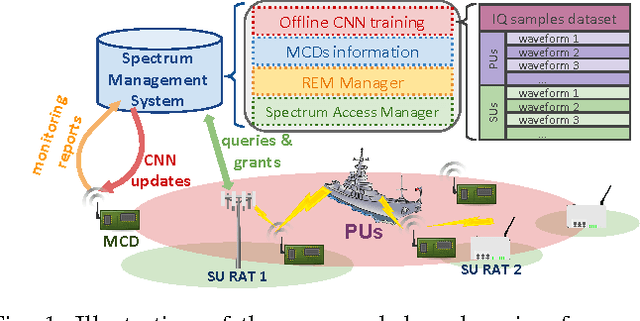
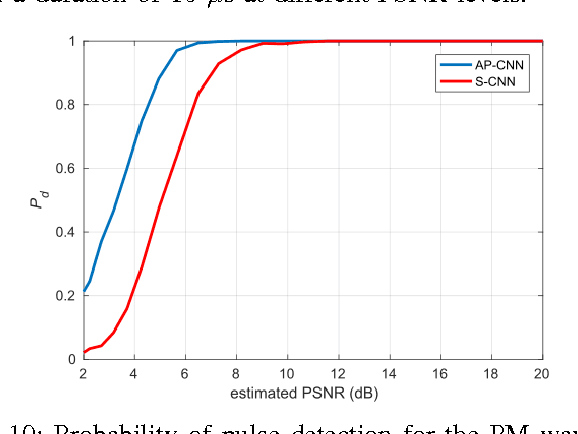
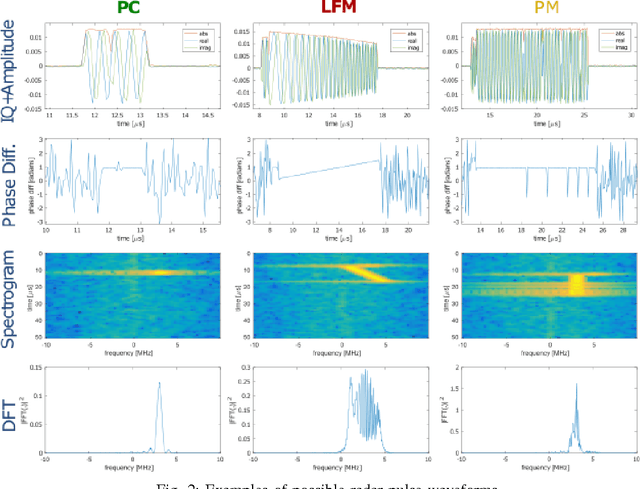
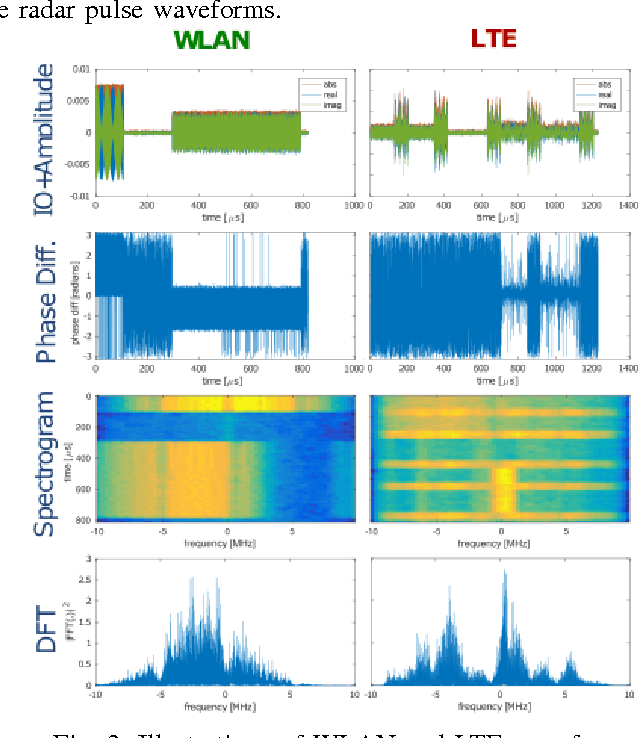
Abstract:In this paper, we present a spectrum monitoring framework for the detection of radar signals in spectrum sharing scenarios. The core of our framework is a deep convolutional neural network (CNN) model that enables Measurement Capable Devices to identify the presence of radar signals in the radio spectrum, even when these signals are overlapped with other sources of interference, such as commercial LTE and WLAN. We collected a large dataset of RF measurements, which include the transmissions of multiple radar pulse waveforms, downlink LTE, WLAN, and thermal noise. We propose a pre-processing data representation that leverages the amplitude and phase shifts of the collected samples. This representation allows our CNN model to achieve a classification accuracy of 99.6% on our testing dataset. The trained CNN model is then tested under various SNR values, outperforming other models, such as spectrogram-based CNN models.
Deep Activity Recognition Models with Triaxial Accelerometers
Oct 25, 2016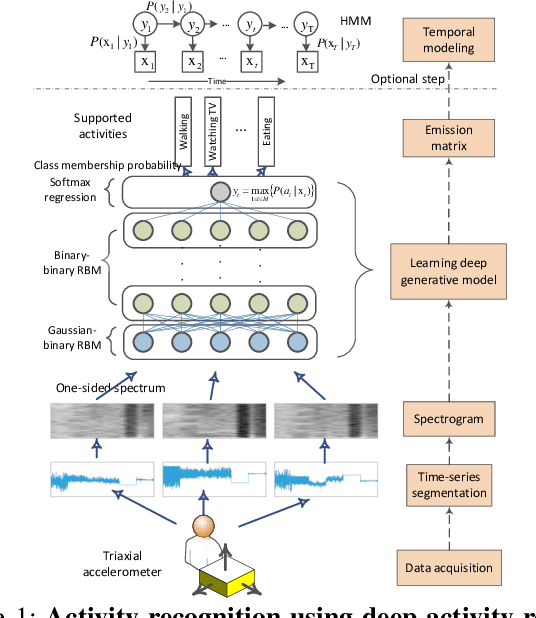

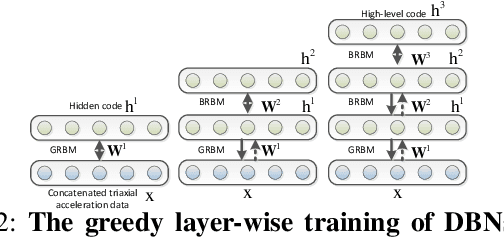

Abstract:Despite the widespread installation of accelerometers in almost all mobile phones and wearable devices, activity recognition using accelerometers is still immature due to the poor recognition accuracy of existing recognition methods and the scarcity of labeled training data. We consider the problem of human activity recognition using triaxial accelerometers and deep learning paradigms. This paper shows that deep activity recognition models (a) provide better recognition accuracy of human activities, (b) avoid the expensive design of handcrafted features in existing systems, and (c) utilize the massive unlabeled acceleration samples for unsupervised feature extraction. Moreover, a hybrid approach of deep learning and hidden Markov models (DL-HMM) is presented for sequential activity recognition. This hybrid approach integrates the hierarchical representations of deep activity recognition models with the stochastic modeling of temporal sequences in the hidden Markov models. We show substantial recognition improvement on real world datasets over state-of-the-art methods of human activity recognition using triaxial accelerometers.
A Combinatorial Optimisation Approach to Designing Dual-Parented Long-Reach Passive Optical Networks
Sep 06, 2011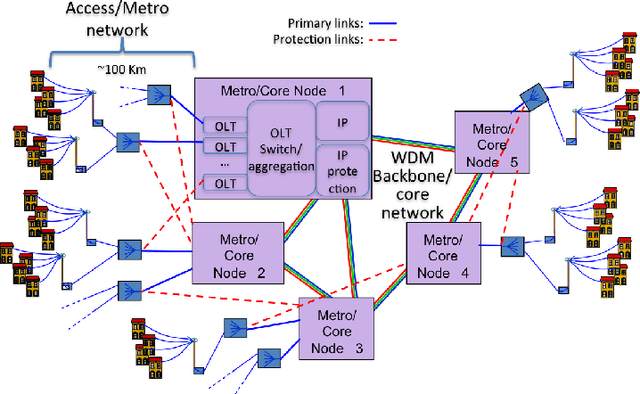
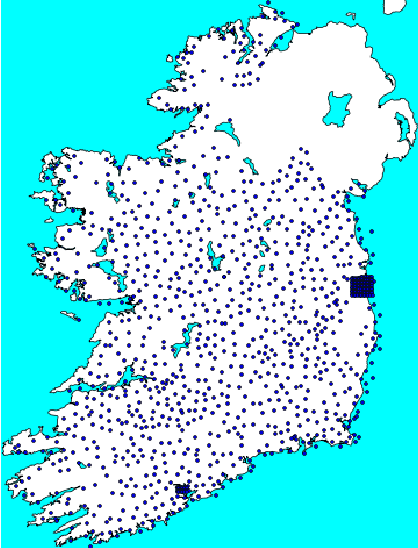

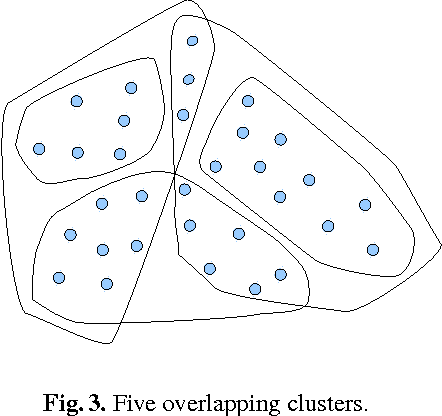
Abstract:We present an application focused on the design of resilient long-reach passive optical networks. We specifically consider dual-parented networks whereby each customer must be connected to two metro sites via local exchange sites. An important property of such a placement is resilience to single metro node failure. The objective of the application is to determine the optimal position of a set of metro nodes such that the total optical fibre length is minimized. We prove that this problem is NP-Complete. We present two alternative combinatorial optimisation approaches to finding an optimal metro node placement using: a mixed integer linear programming (MIP) formulation of the problem; and, a hybrid approach that uses clustering as a preprocessing step. We consider a detailed case-study based on a network for Ireland. The hybrid approach scales well and finds solutions that are close to optimal, with a runtime that is two orders-of-magnitude better than the MIP model.
* University of Ulster, Intelligent System Research Centre, technical report series. ISSN 2041-6407
 Add to Chrome
Add to Chrome Add to Firefox
Add to Firefox Add to Edge
Add to Edge